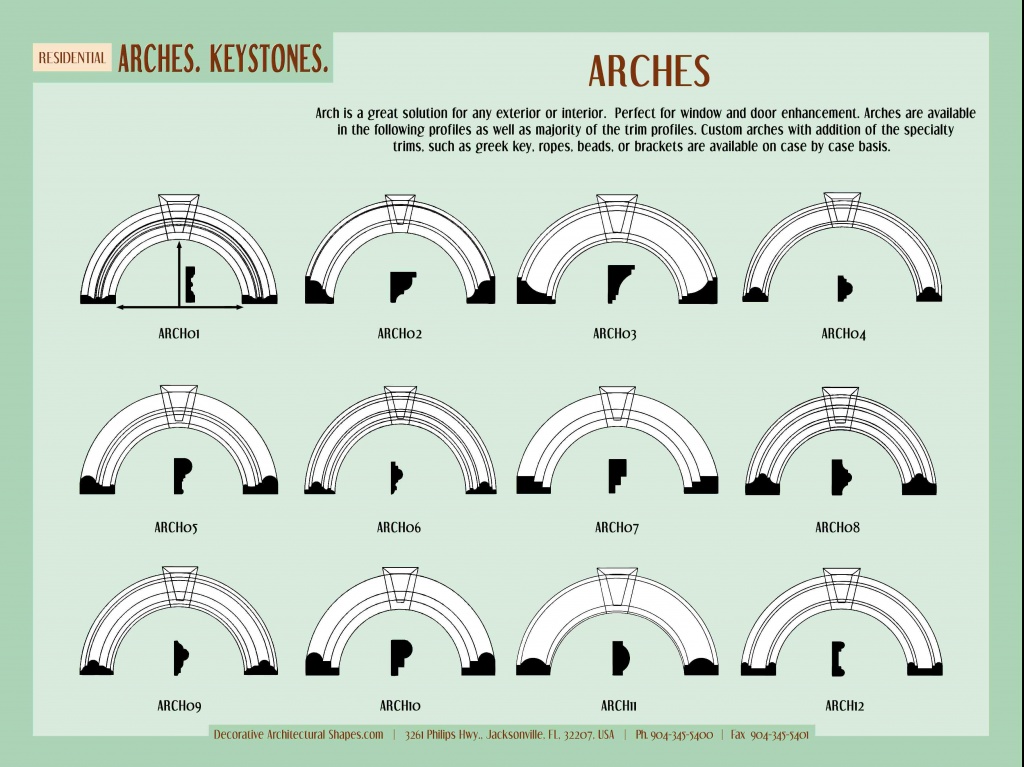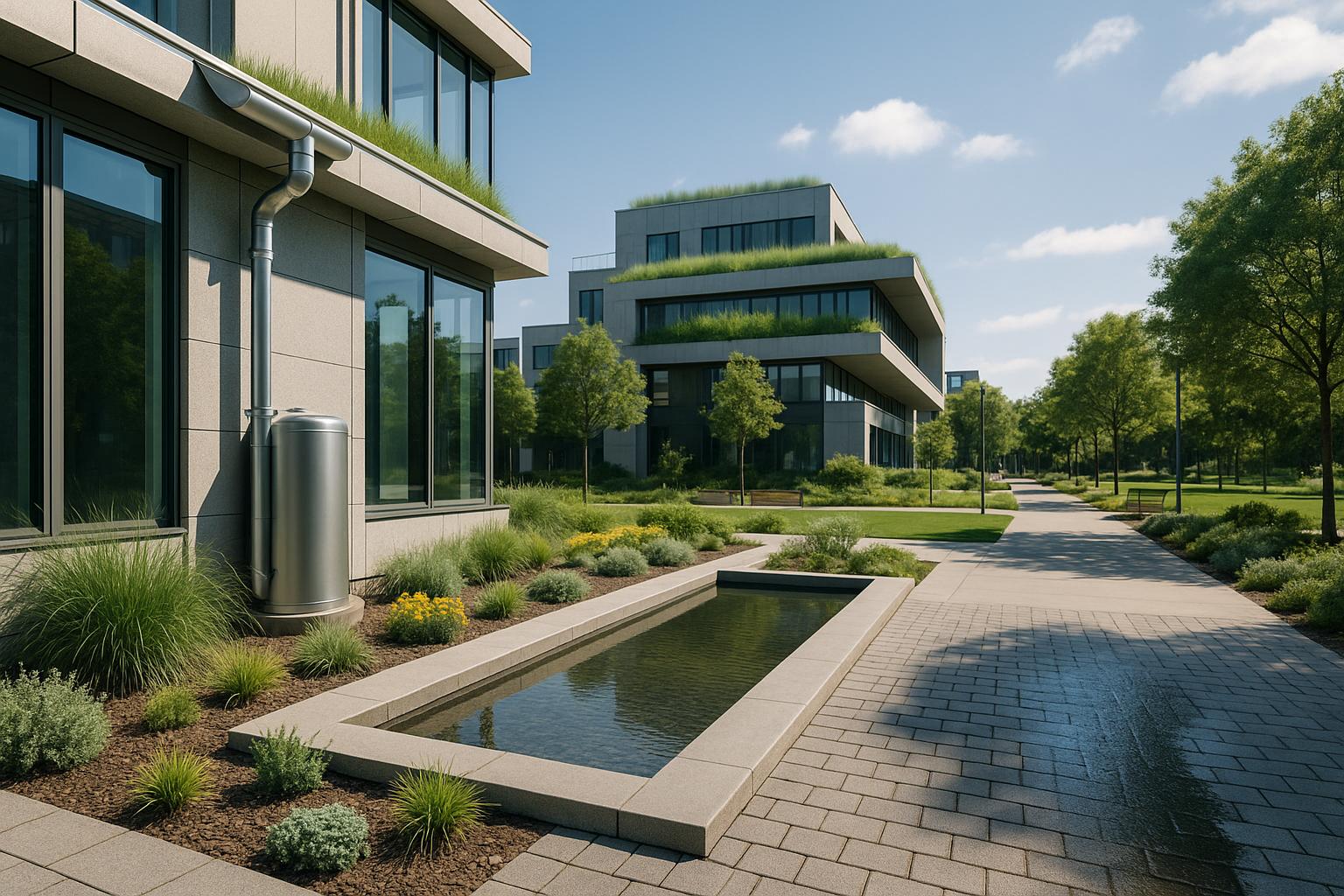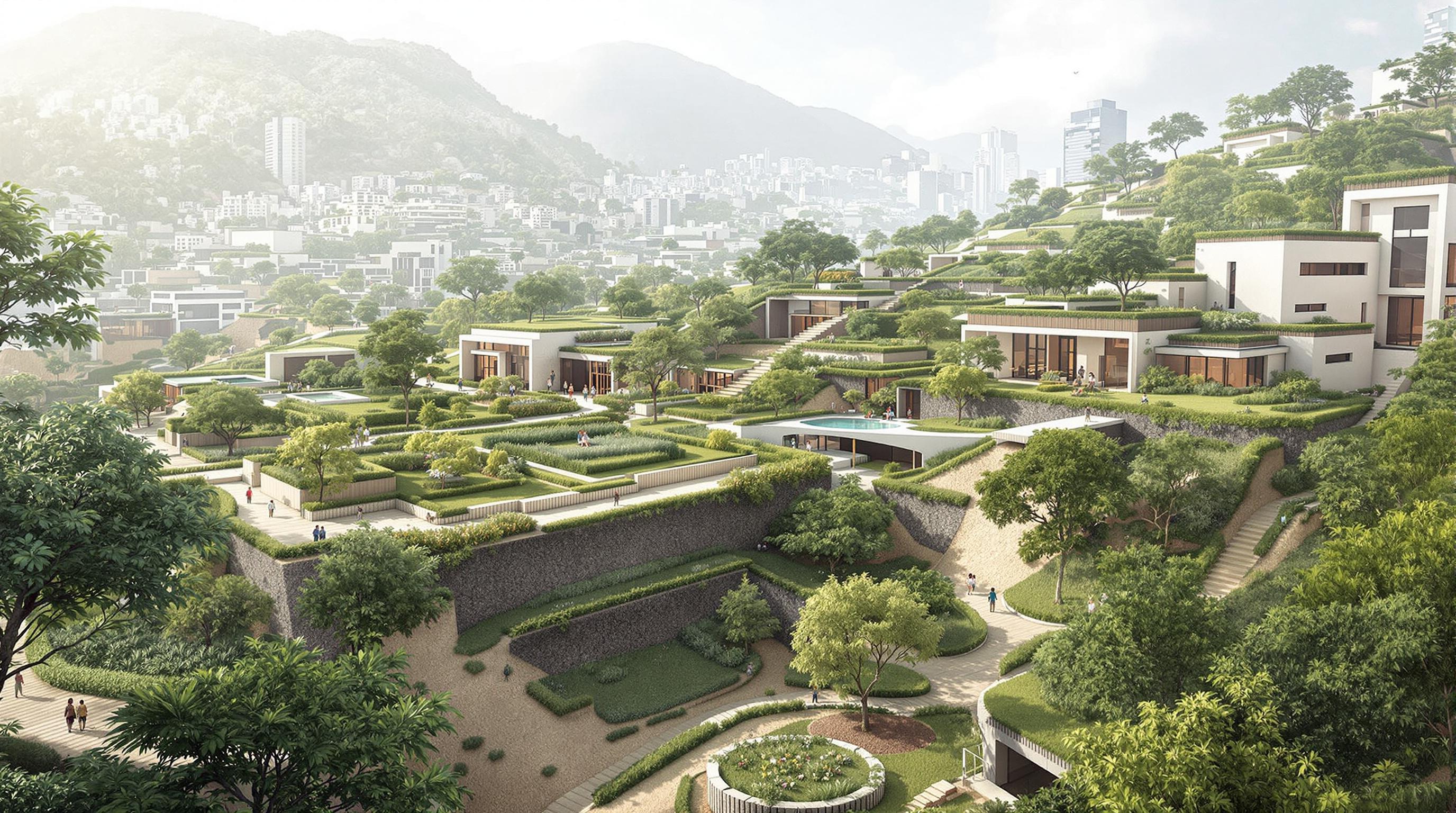Architectural features above arches are not just decorative elements; they serve various functional and aesthetic purposes in a building's design. From the practical keystone that locks all other stones in place, ensuring the arch's stability, to the decorative spandrels and pediments that add beauty and character, these elements are crucial in architecture. This article explores the different parts you might find above arches, their historical background, and their significance. Here's a quick look at what we cover:
- Keystone: The central stone at the top of an arch, crucial for stability.
- Spandrels: Decorative spaces between the arch’s curve and the framework around it.
- Pediments: Triangle-shaped tops, often filled with sculptures or decorations.
- Lintels: Beams across the top of some arches for additional support.
- Variety of Arches: From Roman to Gothic, and how their above features differ.
We also delve into modern innovations in architectural design above arches, showing how today's architects blend traditional styles with new materials and eco-friendly approaches. Whether it's integrating modern materials like metal and glass or incorporating green building trends, the space above arches offers a canvas for creativity and innovation.
Key Terminology
Let's start with some basic words you'll hear when people talk about arches:
- Keystone - This is the top stone in an arch that holds all the other stones in place. It's often made to look special or bigger than the others.
- Voussoir - These are the stones or bricks shaped like wedges that build up the arch.
- Extrados - The outside curve of the arch.
- Intrados - The inside curve of the arch.
- Rise - How tall the arch is from the base to the top.
- Clear Span - The distance between the two sides of the arch at the base.
- Abutment - The solid parts at the ends of the arch that hold it up.
- Spandrel - The space between the top curve of the arch and the frame around it.
Structural Purpose
Arches are great for covering wide spaces without needing a lot of material. They work by pushing the weight they carry down to the sides. This means they can hold up more weight over a bigger space than straight beams can.
Historical Evolution
Arches have been around for a long time. Early people in places like Mesopotamia and Egypt made arched doors and ceilings out of bricks and stones. The Greeks and Romans made them even more popular, using them in big buildings, bridges, and waterways. In the Middle Ages, people started making pointed arches, which let them build even taller and wider buildings. Later on, during the Renaissance, people went back to using rounded arches. When the Industrial Revolution came around, metal arches made it possible to build even longer bridges. Today, architects keep coming up with new shapes and ways to use arches in buildings.
Types of Arches and Their Above Features
Roman Arches
Roman arches are those half-circle arches you often see in old Roman buildings, like the big aqueducts and bridges. They helped create larger spaces inside buildings.
Above these arches, you might find:
- Friezes - These are like decorative belts that run across the top, often showing off stories from myths or important historical events.
- Entablatures - This is a fancy word for a structure that sits on top of columns, made up of three parts: the bottom (architrave), middle (frieze), and top (cornice).
- Pediments - These are the triangle-shaped tops you see on buildings, often filled with sculptures.
Gothic Arches
Gothic arches are those really tall, pointy arches that made it possible to build higher church ceilings. Their shape helped spread the weight around.
Above these arches, you might see:
- Gargoyles - These spooky stone creatures help rainwater flow away from the sides of buildings.
- Pinnacles - Little towers that decorate the corners and edges of buildings.
- Flying Buttresses - Stone supports on the outside of buildings that help hold up the walls, allowing them to be built taller and thinner.
Tudor Arches
Tudor arches are the low, wide, pointy arches that were popular in England from the late medieval period through the 16th century. They're often seen around doors and windows.
Above these arches, you might find:
- Heraldic motifs - Symbols like coats of arms that represent noble families.
- Timber framing - The exposed wooden beams that are both practical and decorative.
Segmental Arches
Segmental arches are the ones with a slight curve, kind of like an eyebrow. They're a practical choice that became popular in the 14th century.
Above these arches, you might see:
- Keystone embellishments - A special, decorative stone in the center of the arch.
- Moldings - Decorative edges around the arch.
Moorish Arches
Moorish arches are those unique, horseshoe-shaped arches found in Islamic architecture, especially in medieval Spain. They stand out because of their shape.
Above these arches, you might find:
- Stucco panels - Fancy plasterwork with detailed designs, often geometric or plant-based.
- Arabesque patterns - Complicated designs that are mostly about plants and geometry.
Flat Arches
Flat arches are just what they sound like: arches with very little curve. They use special bricks or stones to stay up and are good for openings in thicker walls.
Above these arches, you might see:
- Lintels - Beams that go across the top for extra support.
- Relief panels - Carved stone decorations in the spaces on either side of the arch.
Common Elements Above Arches
Arches often come with extra bits on top that make them look good or help them stand up better. Here are some of the usual parts you might see:

The keystone is the main stone right at the top of an arch. It’s the last piece put in place and locks all the other stones together.
- It’s the final piece that keeps the arch stable
- It’s usually a bit fancier or bigger to show off its importance
- Shapes can vary, but it’s always wedge-like
Springers
These are the stones that start the arch off on each side at the bottom.
- They’re like the foundation stones for the arch
- Sometimes they have special designs
- They might be made of a different stuff than the rest of the arch
Spandrels
This is the name for the spaces between the arch’s curve and the straight frame around it. They’re often decorated.
- A good spot for adding art like carvings or paintings
- They blend the arch into the rest of the building
- Perfect for adding beauty without messing with the arch’s job
Lintels
A lintel is a straight beam that goes across the top of some arches.
- Adds extra support
- Keeps rain and weather out
- Used with flat arches that aren’t as strong on their own
- Usually made from wood or metal, not stone
Pediments
Pediments are the triangle-shaped tops you see above arches and columns.
- They make the top of the arch look really grand
- Often decorated with fancy designs or statues
- They’re a classic look for big, important buildings
- Sometimes show off family symbols or other important signs
So, to sum it up, the top part of an arch isn’t just for looks. It can help hold the arch up, keep the weather out, and make the building more interesting or meaningful. There’s a lot you can do with the space above an arch.
Innovations and Applications
Today's architects are getting really creative with the parts above arches, mixing old styles with new ideas and materials. Here's a look at some cool ways they're doing it:
Integrating Modern Materials
-
Architects are trying out new stuff like metal, glass, and plastics to add a fresh twist to the classic decorations above arches. For example:
-
Using shiny metal or clear plastics for a modern, simple look
-
Putting in colored or frosted glass to let light in a fun way
-
Choosing metal panels with interesting patterns for a bit of flair
-
These new materials let architects dream up shapes and designs that were too hard to do with just stone before. It's like mixing the past with the future.
Artistic Interpretations
-
Some architects are getting artsy, putting a new spin on old designs above arches:
-
Painting or making mosaics that show off today's stories
-
Using lights or sculptures to make the top of arches stand out
-
Creating unique designs for the keystone with different materials
-
This way, old traditions get a new look, making them cool again.
Blending Styles
-
Mixing old and new styles above arches is another trend:
-
Putting together Gothic points with modern cables
-
Combining traditional tile work with new patterns
-
Using smart glass in classic window arches for better insulation
-
This approach celebrates history while embracing new technology.
Green Building Trends
-
Being eco-friendly is important, too. Some new ideas include:
-
Adding solar panels or plants in the spaces above arches
-
Installing skylights or shades that help control light and heat
-
Using smart glass that helps keep buildings warm or cool
-
Keeping the timeless arch design, these green solutions look to the future.
By mixing the old with the new, today's architects make sure the space above arches is still exciting. They're keeping history alive while also thinking about beauty, the environment, and what comes next.
sbb-itb-1be9014
Case Studies
Here are some famous buildings that show off cool and unique designs above their arches:
The Pantheon (Rome, Italy)
The Pantheon, built around 126-128 AD, has one of the biggest concrete domes ever made without any extra support. It stands on top of round arches supported by tall columns.
Key features above the arches include:
- A simple entablature right above the arches, without any fancy decorations. This is different from the rest of the building, which is pretty decorated.
- The dome acts like a big, impressive hat for the building, with a hole in the top called an oculus. This dome, being over 43 meters wide, was a big deal back then.
- Inside the dome, there are coffers, or sunken panels, that make the ceiling look really interesting. They get smaller as they get closer to the oculus.
The dome and the part of the building just below it make the Pantheon really stand out. Its smart use of concrete and clever design show how advanced Roman builders were.
Sagrada Familia (Barcelona, Spain)
This famous church, designed by Antoni Gaudí, has towers that look like they're from a fairy tale, with lots of detailed decorations and high, vaulted ceilings.
Above its arches and ceilings, you'll find:
- The Nativity Facade has four pinnacles with scenes from the Bible, statues showing virtues, and pediments that lead up to fancy bell towers.
- The ceilings inside are full of colors and shapes, including plants, animals, and Christian symbols, all mixed into beautiful designs.
- The Passion Facade will have parapets that lead to really tall spires when it's all finished.
The Sagrada Familia mixes old Gothic styles with Art Nouveau and Gaudí’s own unique touches. The details above its arches are full of meaning and show off Gaudí’s creative talent.
Sydney Harbour Bridge (Sydney, Australia)
This famous bridge, opened in 1932, was the widest of its kind back then. It has a big steel arch in the middle with some interesting details above it:
- The top has metal beams and trusses that form lookout points, and rods that hang down. These parts are not just for looks; they're important for the bridge's structure.
- There are flags, antennas, and things to protect the bridge from lightning at the very top.
- Each end of the bridge has big stone towers, topped with markers used for ships, which nod to Sydney’s history by the sea.
- People can walk across the bridge on a path that lets them see the city and water from above the arch.
The Sydney Harbour Bridge is a great mix of smart engineering and nice design. Its arch, beams, towers, and extra bits have made it a famous landmark.
Conclusion
Arches are super important in building stuff. They help carry weight so we can have big, open spaces inside and tall buildings without needing a ton of extra support. But arches aren't just about holding things up. They also make buildings look really cool. The top part of an arch, where you might see special stones, designs, and other neat stuff, adds beauty, tells a bit about the building's background, and keeps the rain off.
Nowadays, architects are coming up with new ways to use arches. They mix old designs with new materials and ideas, like being eco-friendly, to keep making buildings interesting and up-to-date. This means they can keep the good stuff from the past while also adding new touches.
So, what we're saying is that the top part of an arch does a lot. It makes the arch work better and makes the building look nicer. Smart builders know how to use this to make places that are amazing to look at, do their job well, last a long time, and mean something to people. The arch might be what keeps the building up, but the fancy bits on top are what give it character.
Related Questions
What is the top of an arch called?
The very top stone of an arch is known as the keystone. It's shaped like a wedge and is super important because it locks all the other stones into place, helping the arch to support weight.
What are the characteristics of an arch in architecture?
Some key things about arches in buildings include:
- They have a curved shape that goes over an opening
- They spread out weight to the sides instead of straight down
- This design lets them support more weight over openings compared to straight beams
- There are different types like Roman, Gothic, and Tudor, each with its own look
- They can be made from stuff like brick, stone, or concrete
How do you describe architectural features?
To talk about architectural features, look at:
- What materials and textures are used (like wood, brick, metal, glass)
- The size, layout, and materials of windows and doors
- The shape and covering of the roof
- Any decorative bits like moldings, carvings, or tilework
- Big structural parts like arches, columns, and towers
Focus on what stands out the most.
What do arches signify in architecture?
Arches in buildings often mean:
- Strength and steadiness because of how they're built
- They make spaces feel taller and more open
- They can be like doorways or paths between different areas
- They tell us about the styles and cultures of the people who made them, like the Romans or Goths
- They show off creativity with their decorative details
Arches add a sense of height, grandness, and a timeless look to buildings.


